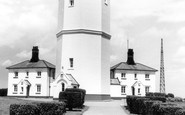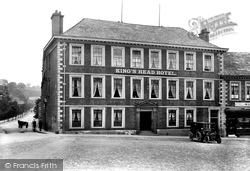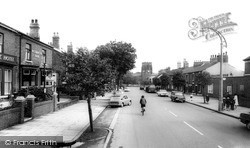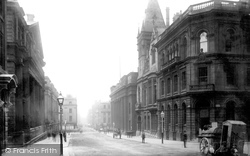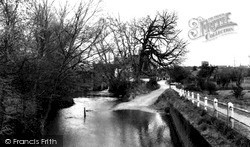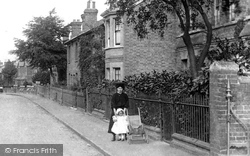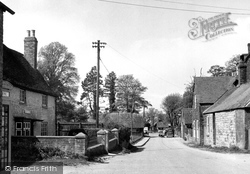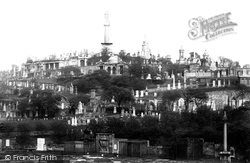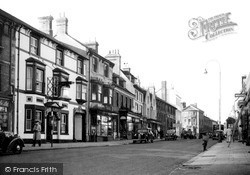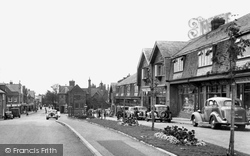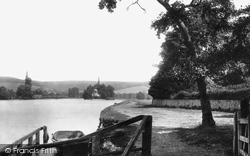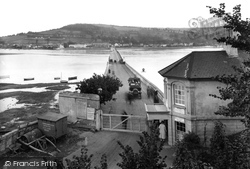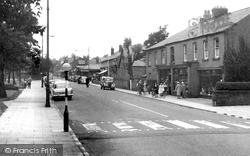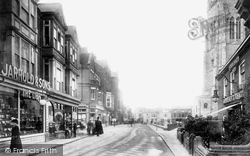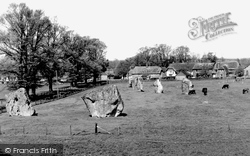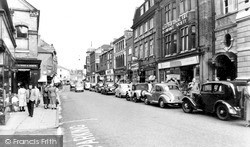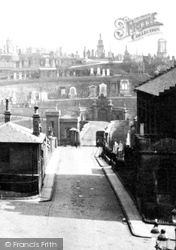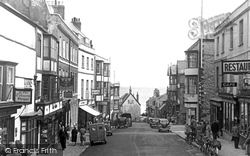Places
3 places found.
Those places high-lighted have photos. All locations may have maps, books and memories.
Photos
68 photos found. Showing results 1,361 to 68.
Maps
12 maps found.
Books
15 books found. Showing results 1,633 to 15.
Memories
7,562 memories found. Showing results 681 to 690.
Bowes Rd
I lived in Bowes Road from 1980 until 1985, when circumstances meant I had to move away, but I always have good memories of the area, as some of my best times were spent there. I had reason to return recently and I could not take in ...Read more
A memory of Palmers Green by
My Lost Youth
As a wee lad of 7 o r8, I had (I think) TB, my illness was called debility. My only memories are, an ambulance at my home in Walsall, my mom/dad waving and the tears, 2 nuns and then a hell of a long scary train ride. Margate was ...Read more
A memory of Broadstairs in 1954 by
Life In Bury For A Little Boy.
Millie Grinsted nee Cheeseman was my great aunt. She was the sister of my paternal grandfather William Edward Cheeseman. I remember staying with her and Edward at times during and after the war. I remember on one ...Read more
A memory of Bury in 1940 by
Charlwood Garage The Old Forge
We lived in a 400 year old cottage at the back of The Old Forge, later Charlwood Garage. My brother was born in the cottage in October 1965. I am trying to locate any photographs of the old house behind the forge or ...Read more
A memory of Charlwood in 1965
Early Childhood
Maiden name was Boyes, I lived at the Hass with my mum and dad and I had four brothers, they were Vyon, Morris, Graham and Leslie. I went to Wamphary School, we walked to school every day, my brother Leslie and me and my friend Evlin ...Read more
A memory of Wamphray in 1949 by
Our History In Brief
Although I had visited Hightown on many many occasions before this date to visit my Grandparents etc I particularly remember the days when myself and friends from Waterloo would visit Altcar Rifle Range to mark the ...Read more
A memory of Hightown in 1957 by
Wartime Evacuee 1939 1940
In August 1939 I was evacuated frm Salford to Caton. I had my gas mask, a small parcel of food and a label on my clothing. We arrived at the then beautiful station, adorned with flowers. Then we walked to the Village ...Read more
A memory of Caton in 1930 by
County Oak A23 Southdown Coach Station
The Coach Station had a cafe (or restaurant) backing a large parking area for London to Brighton Southdown Coaches. It was sited 100 yards south of the County border opposite "Overton's" Beehive workshop on the ...Read more
A memory of Crawley in 1950 by
Farraline Hall
Moved to Farraline Hall, Errogie in 1950 from Leeds. Dad was estate manager. Me and my brother Jeff and sister Jennifer in the back of a 7 ton flat lorry, sat on mattress under canvas in the back of it. I went to Errogie school, had to ...Read more
A memory of Errogie in 1950 by
Jtbells
This is the year I started on the building sites in 1963, I got a job on J. T. Bell's site in Whickam, the site hadn't been running long then as it was in the first stage. All the lads were mainly from Newburn, Lemington, and Throckley. If ...Read more
A memory of Newburn in 1963 by
Captions
2,501 captions found. Showing results 1,633 to 1,656.
in the Market Place.
These opposing views of the High Street are photographed at five year intervals.
The name Eccles comes from 'ecclesia', and means 'the place of the church', so it is no surprise that its central street is called Church Street.
This view looks from the top of King Street down towards Cross Street. We can see that the street narrows towards the bottom.
Previously a corn mill, the building was converted to manufacture hand-made paper in 1713.
Around AD 120, a mansio was built on a slight rise overlooking the site of the fort.
This view looks from within the circle, west to the High Street which continues outside the henge. The post office (left) is now a Celtic gift shop.
Glasgow received its first charter from King William the Lion in about 1175, and for the first time it was designated by the Latin term civitas (city).
Looking North The main street of Old Swindon was first recorded in 1581.
The centre of Heswall was originally much closer to the shoreline, probably in the area around Village Road and St Peter's Church, but the advent of Telegraph Road - the A540 - has moved the commercial
By the beginning of the 17th century the centre of Glasgow had shifted south, to the foot of the High Street where it joined the Saltmarket.
As a barometer of Formby's growth in the second half of the 20th century, Chapel Lane (facing us) is a good measuring device.
Until the reign of Henry VIII, the lack of saltpetre in England meant most gunpowder was imported.
From the river bank near the Leander Club we can look across to the river front of Henley and imagine its bankside wharfs alive with the shouts of bargees and watermen loading their barges, with
And not forgetting the pasty man who marched about with a steaming tray of toothsome savouries, yelling `All `ot!
The centre of Heswall was originally much closer to the shoreline, probably in the area around Village Road and St Peter's Church, but the advent of Telegraph Road - the A540 - has moved the commercial
By the time of this photograph Cromer had experienced a continuing building boom, which included new premises for fashionable stores such as Jarrold & Sons (left), who are still flourishing both in Cromer
This 1903 view looking south down the High Street is full of detail. It seems to have been taken one warm morning - note the open windows, and the summery dresses of the girls on the right.
The Avebury stone circle in Wiltshire is unique: modern village life and ancient stones live side by side in a common and mutual existence, where the past is indelibly a living part of the present.
The National Westminster Bank (extreme right) is next door to a seed merchant, still an important trader in a country town before seeds were brightly packaged and sold by garden centres.
By the beginning of the 17th century the centre of Glasgow had shifted south, to the foot of the High Street where it joined the Saltmarket.
From their sources on the high land, the numerous rivers run across this landscape and make their winding ways toward the coast.
Ye Olde Tobacco Shoppe (left) was the home of blacksmith Samuel Govier, who provided the artist James Abbott McNeill Whistler with a back room for his studio.
After the Second World War the business moved to the High Street, and made the most of Epsom's connections with the riding world. They supplied Nightingalls, Dullers, and other trainers.
Places (3)
Photos (68)
Memories (7562)
Books (15)
Maps (12)



